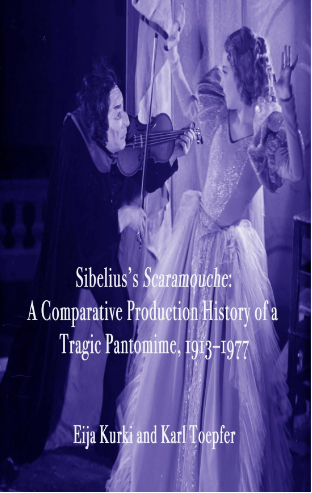
Cover photo: Alexander Saxelin as Scaramouche and Eva Hemming as Blondelaine in Scaramouche, directed by Maggie Gripenberg, Helsinki, 1946. Photo: Tenhovaara Studio; Finnish National Ballet
Sibelius’s ‘Scaramouche’: A Comparative Production History of a Tragic Pantomime, 1913–1977
This book, a collaborative effort between Karl Toepfer and Finnish scholar Eija Kurki, describes the historical context for the Scaramouche tragic pantomime created by Poul Knudsen and Jean Sibelius in 1913. The pantomime had numerous productions in various European countries between 1922 and 1977, and the book examines all of them according to all available evidence. The text explains the historical and cultural significance of the pantomime and how it uniquely explores a dark and complex intersection of female sexuality, marriage, and class control of erotic desire. The authors examine productions of Scaramouche from the premiere production in Copenhagen in 1922 to the last major production in Karl-Marx-Stadt, East Germany in 1977, including productions in Finland, Norway, Sweden, Latvia, France, Germany (1927) and Denmark (1950).
The comparative approach to production history, accompanied by many illustrations, allows the reader to see Scaramouche as more than a historical object; it is a historical agent, causing a remarkable array of actions and responses to its themes and strange perspective on sexuality rather than a unifying feeling across languages and eras. The book is innovative in its unprecedented international scope relative to theatrical production history. Few, if any, production histories compare evidence from so many different languages and decades. The reader encounters a huge number of ‘voices’ responding to Scaramouche in media reviews, memoirs and other sources, and therefore understands how productions of the pantomime ‘awakened an avalanche of language’ up to 1977, while since then, though scholars now claim it to be one of Sibelius’s major achievements, it has disappeared entirely from the stage for mysterious reasons that the book attempts to identify.
170 pages, over 100 illustrations.
Click here for Karl Toepfer’s website where you can download the book free of charge.